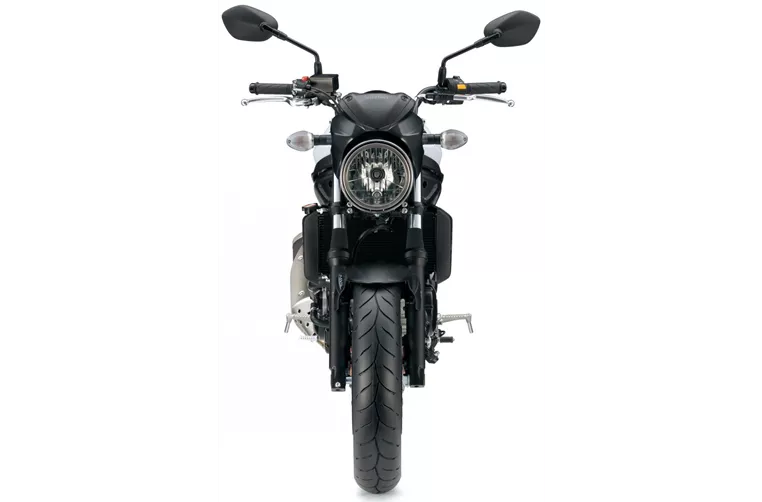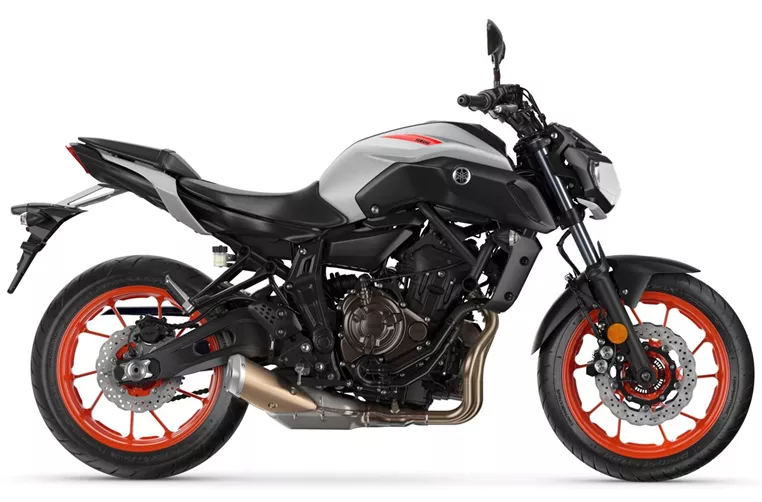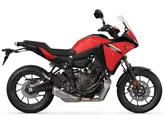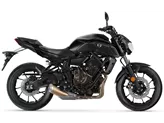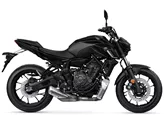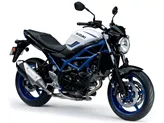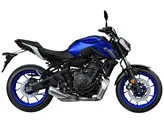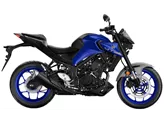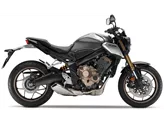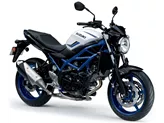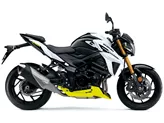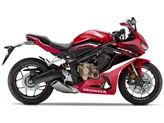Suzuki SV 650 2016 vs. Yamaha MT-07 2020
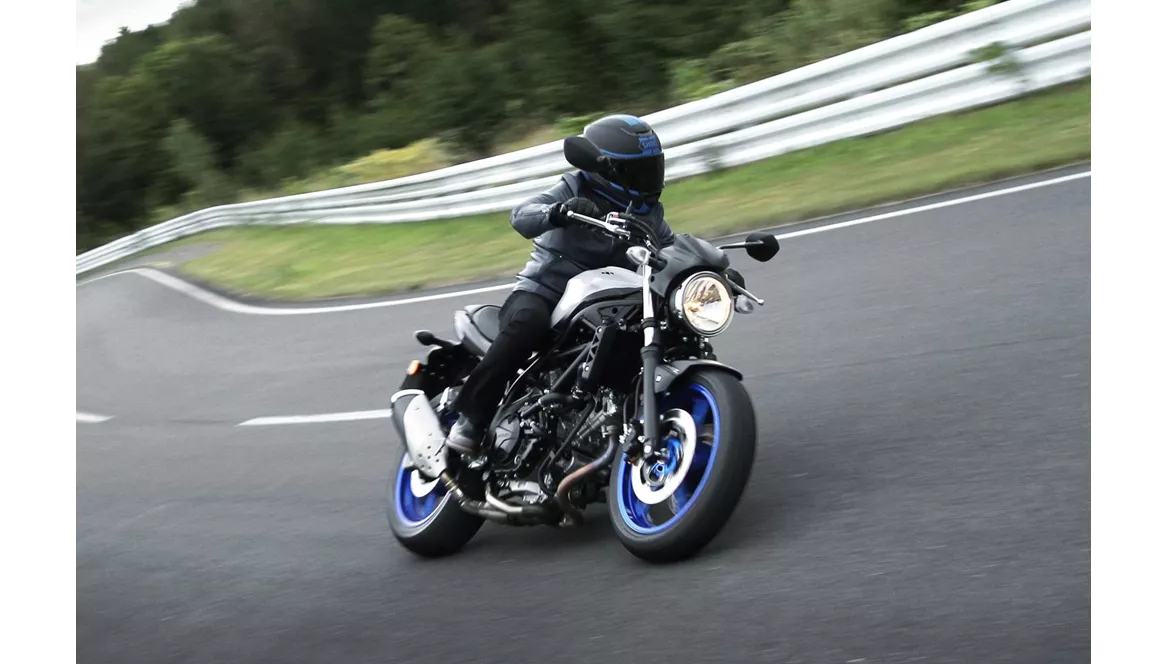
Suzuki SV 650 2016
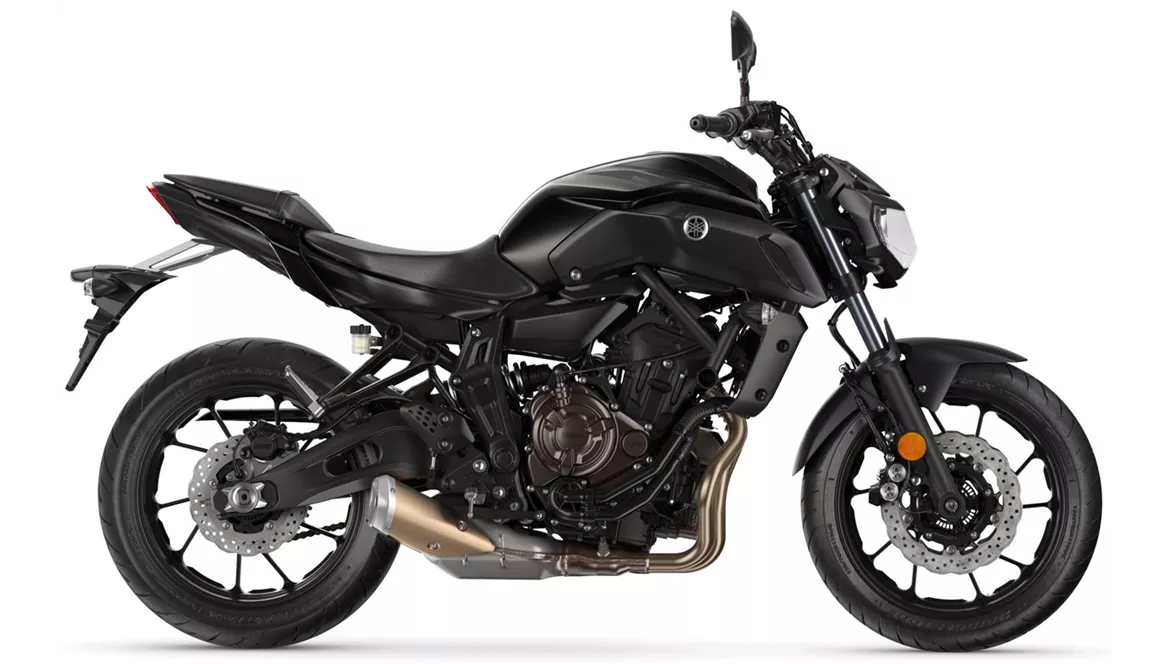
Yamaha MT-07 2020
Vue d’ensemble - Suzuki SV 650 2016 vs Yamaha MT-07 2020
The Suzuki SV 650 2016 and the Yamaha MT-07 2020 are both popular naked bikes in the market. While they share some similarities in terms of engine type, power, torque, cooling, and frame material, there are also notable differences between the two models.
In terms of engine specifications, the Suzuki SV 650 2016 is equipped with a V2 engine that produces 76 horsepower and 64 Nm of torque. On the other hand, the Yamaha MT-07 2020 features an inline two-cylinder engine with slightly lower power output at 75 horsepower but a slightly higher torque of 68 Nm. Both bikes have liquid cooling systems and a displacement of around 650cc.
When it comes to suspension, both bikes have telescopic forks at the front, providing a smooth and controlled ride. The chassis of both models is made of steel, ensuring durability and stability.
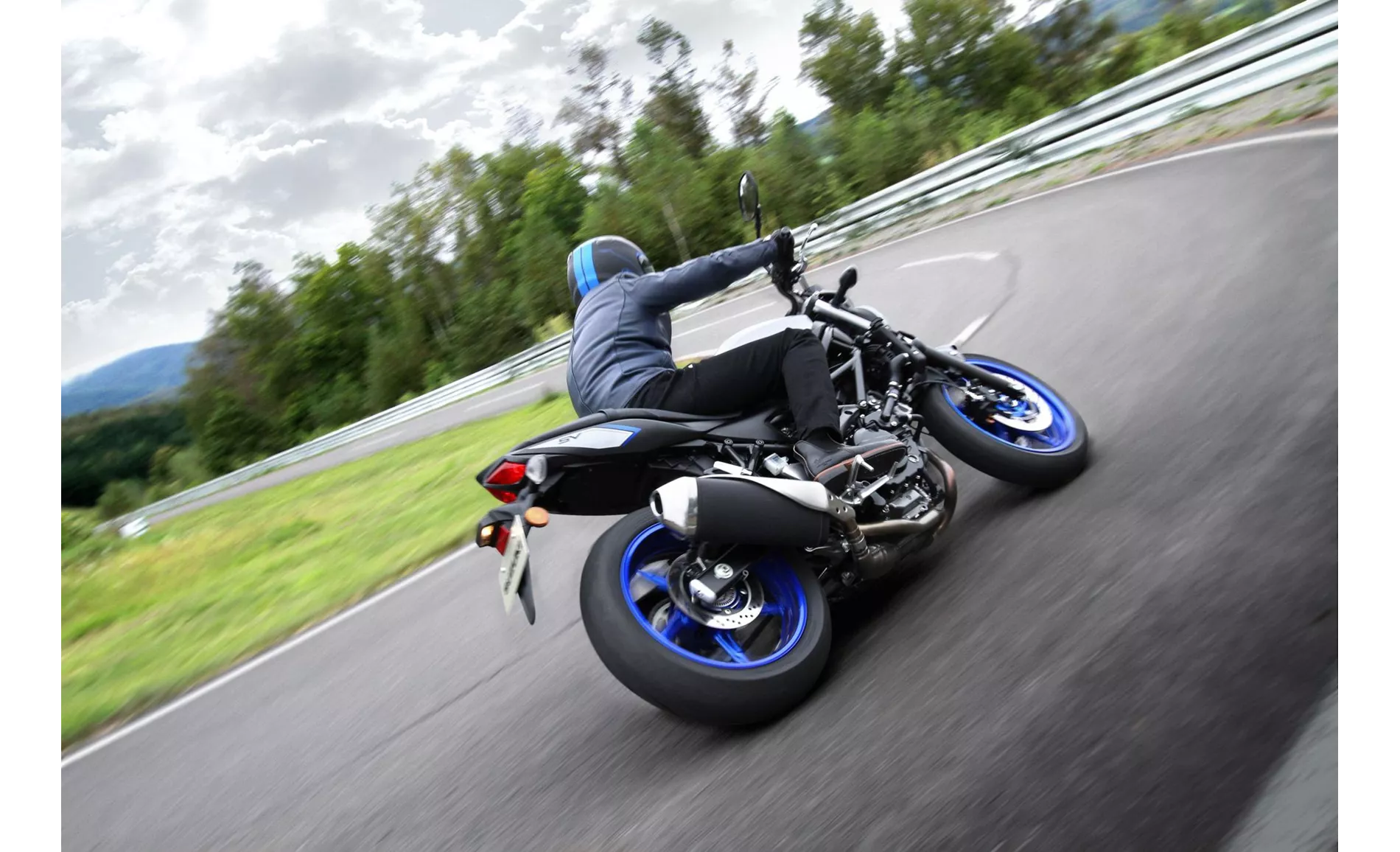
Suzuki SV 650 2016
In terms of braking, both bikes feature double disk brakes at the front, offering good control and stopping power. The front tire width is the same for both models at 120mm, with a diameter of 17 inches. However, the Yamaha MT-07 2020 has a wider rear tire at 180mm, compared to the Suzuki SV 650 2016's 160mm rear tire. Both bikes have a 17-inch rear tire diameter.
When it comes to dimensions and weights, the Yamaha MT-07 2020 has a slightly shorter wheelbase of 1400mm compared to the Suzuki SV 650 2016's 1445mm. The seat height of the Yamaha MT-07 2020 is also slightly higher at 805mm, while the Suzuki SV 650 2016 has a seat height of 785mm. In terms of weight, the Yamaha MT-07 2020 is lighter at 182kg (with ABS) compared to the Suzuki SV 650 2016's 197kg (with ABS). The fuel tank capacity of the Yamaha MT-07 2020 is slightly larger at 14 liters, while the Suzuki SV 650 2016 has a fuel tank capacity of 13.8 liters.
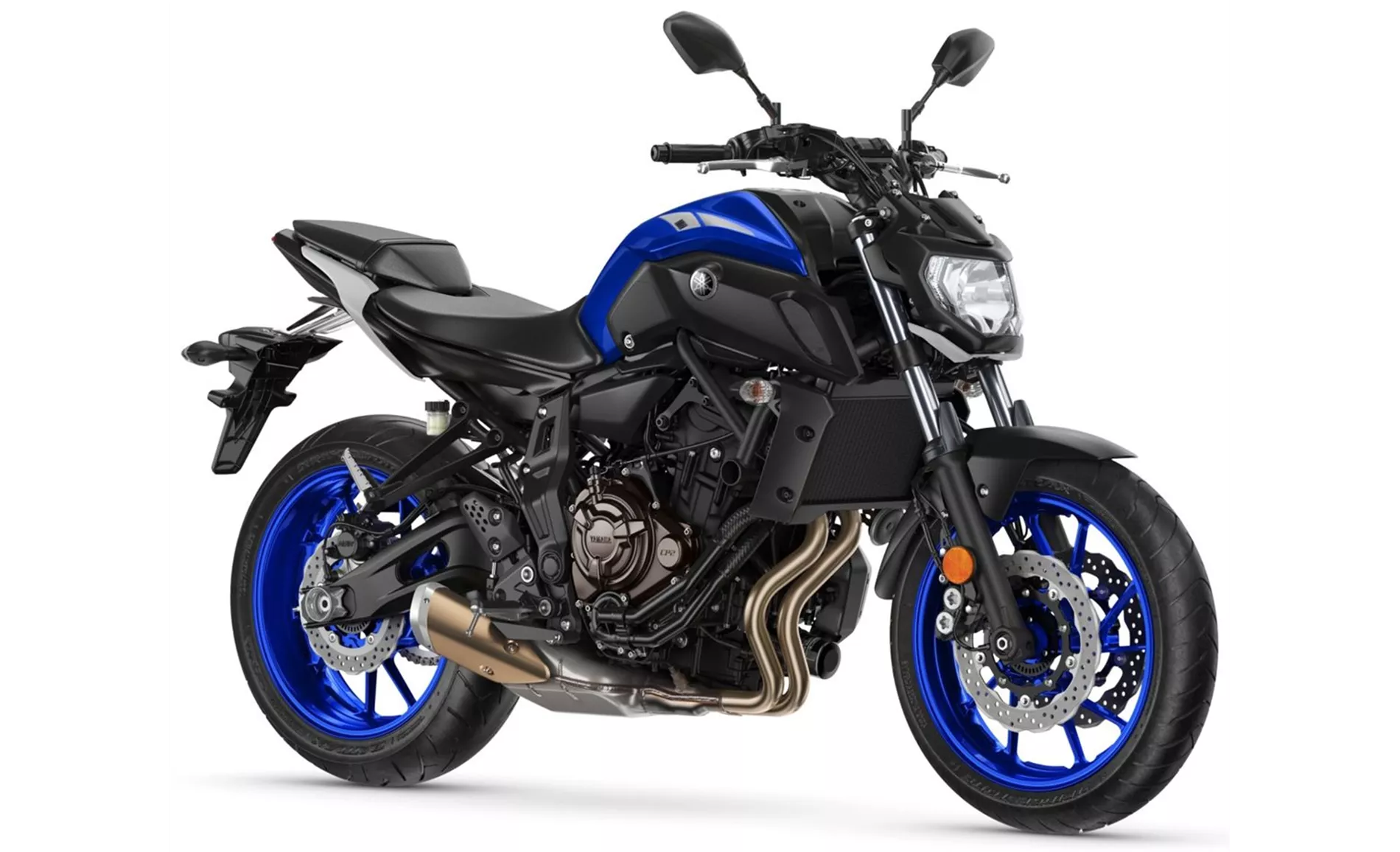
Yamaha MT-07 2020
In terms of strengths, the Suzuki SV 650 2016 is praised for its agile and powerful engine, delivering a typical V2 sound. It also offers a pleasant and low seating position, easy handling, comfortable chassis, and brakes with good control. On the other hand, the Yamaha MT-07 2020 is appreciated for its high-torque two-cylinder engine, well-done chassis set-up, and easy rideability. It also offers a pleasant seating position, a large selection of accessories, and a good price-performance ratio.
However, the Suzuki SV 650 2016 has a weakness in terms of a poorly readable digital tachometer, which may be inconvenient for some riders. The Yamaha MT-07 2020, on the other hand, has weaknesses in its optics and fittings, which are perceived as looking a bit dull, and the controls on the handlebars are considered to be of slightly cheaper quality.
In conclusion, both the Suzuki SV 650 2016 and the Yamaha MT-07 2020 are capable and popular naked bikes with their own strengths and weaknesses. Riders looking for a bike with a powerful engine, comfortable seating position, and easy handling may prefer the Suzuki SV 650 2016. On the other hand, those seeking a bike with high torque, a well-balanced chassis, and a good price-performance ratio may lean towards the Yamaha MT-07 2020. Ultimately, the choice between the two models will depend on the individual preferences and priorities of the rider.
Caractéristiques techniques Suzuki SV 650 2016 par rapport à Yamaha MT-07 2020
Avantages et inconvénients en comparaison
Avantages et inconvénients en comparaison
Suzuki SV 650 2016
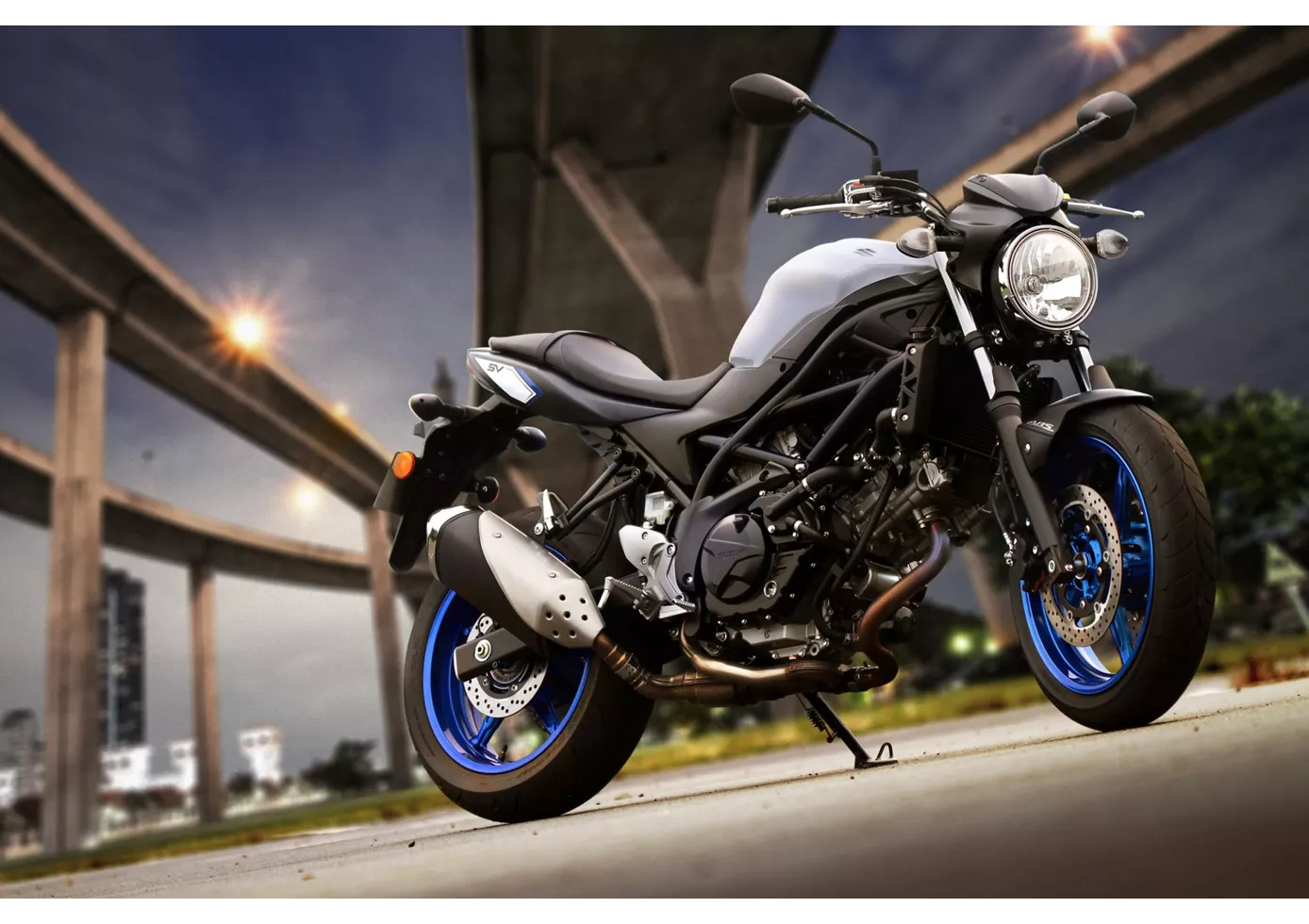
La nouvelle SV650 s'inscrit dans la lignée du minimalisme visuel des deux premières générations de SV650, tout en se basant techniquement sur son prédécesseur direct, la SFV650 Gladius - deux excellents coups qui font de la très moderne SV650 un classique. Le design s'inscrit parfaitement dans l'époque des nombreuses transformations rétro, mais à l'intérieur sommeillent aussi des gadgets modernes qui facilitent l'apprentissage, surtout pour les débutants. Le moteur, quant à lui, peut également convaincre les pilotes confirmés, le vrombissement typique du V2 est magnifique. En ce qui concerne le châssis et les freins, il ne faut pas s'attendre à une sportivité extrême, mais le prix de près de 6400 euros (en Allemagne) est une annonce qui fera sans doute avaler la poussière à la concurrence.
Yamaha MT-07 2020
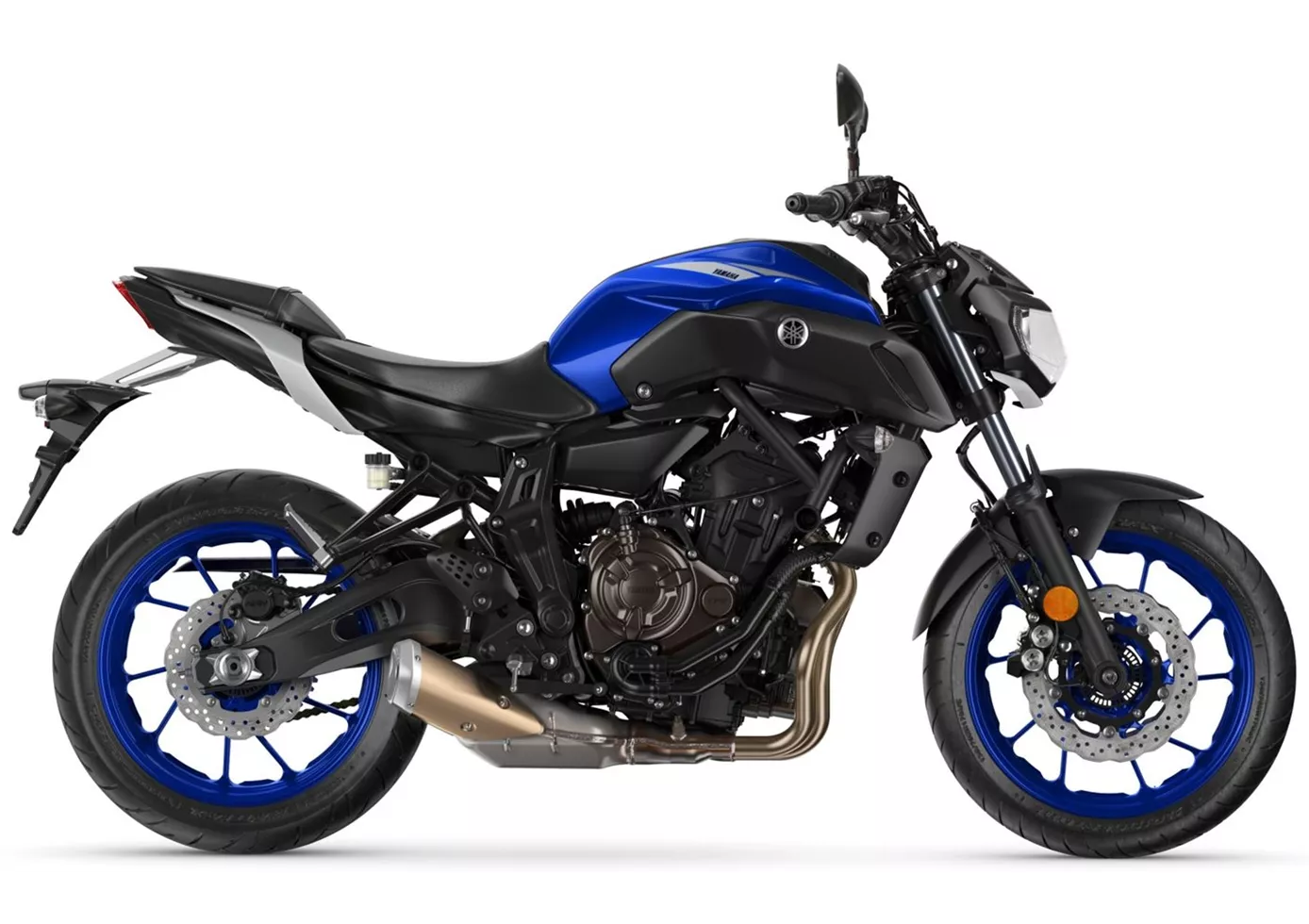
La MT-07 est une magnifique machine de plaisir qui se laisse conduire de manière extrêmement sportive. Les freins sont très puissants et le moteur est actuellement de loin le plus agile de sa catégorie - et peut-être même plus. La maniabilité légère s'y prête parfaitement et le châssis fait un compromis compréhensible entre le confort et le sport - rappelant ainsi que la MT-07 bon marché doit aussi avoir beaucoup à offrir aux débutants. Seul le design, avec son phare halogène et sa fourche conventionnelle, est déjà assez démodé.
Comparaison des prix Prix moyen du marché Suzuki SV 650 vs Yamaha MT-07
There are a few key differences between a Suzuki SV 650 2016 and a Yamaha MT-07 2020. In terms of price, the actual average price of a Yamaha MT-07 2020 is about 27% higher. A Suzuki SV 650 2016 experiences a loss of 140 USD in one year of ownership. This is offset by a loss of 40 USD for a Yamaha MT-07 2020. Compared to Yamaha MT-07 2020 there are less Suzuki SV 650 2016 bikes available on the 1000PS.de Marketplace, specifically 11 compared to 20. It takes less time to sell a Yamaha MT-07 with 69 days compared to 80 days for the Suzuki SV 650. Since model year 2005 1000PS.de editors have written 25 reviews for the Suzuki SV 650 and 69 reviews for the Yamaha MT-07 since model year 2013. The first review for the Suzuki SV 650 was published on 9/26/2008 and now has more than 14,200 views. This compares to more than 12,600 views for the first review on Yamaha MT-07 published on 11/4/2013.
